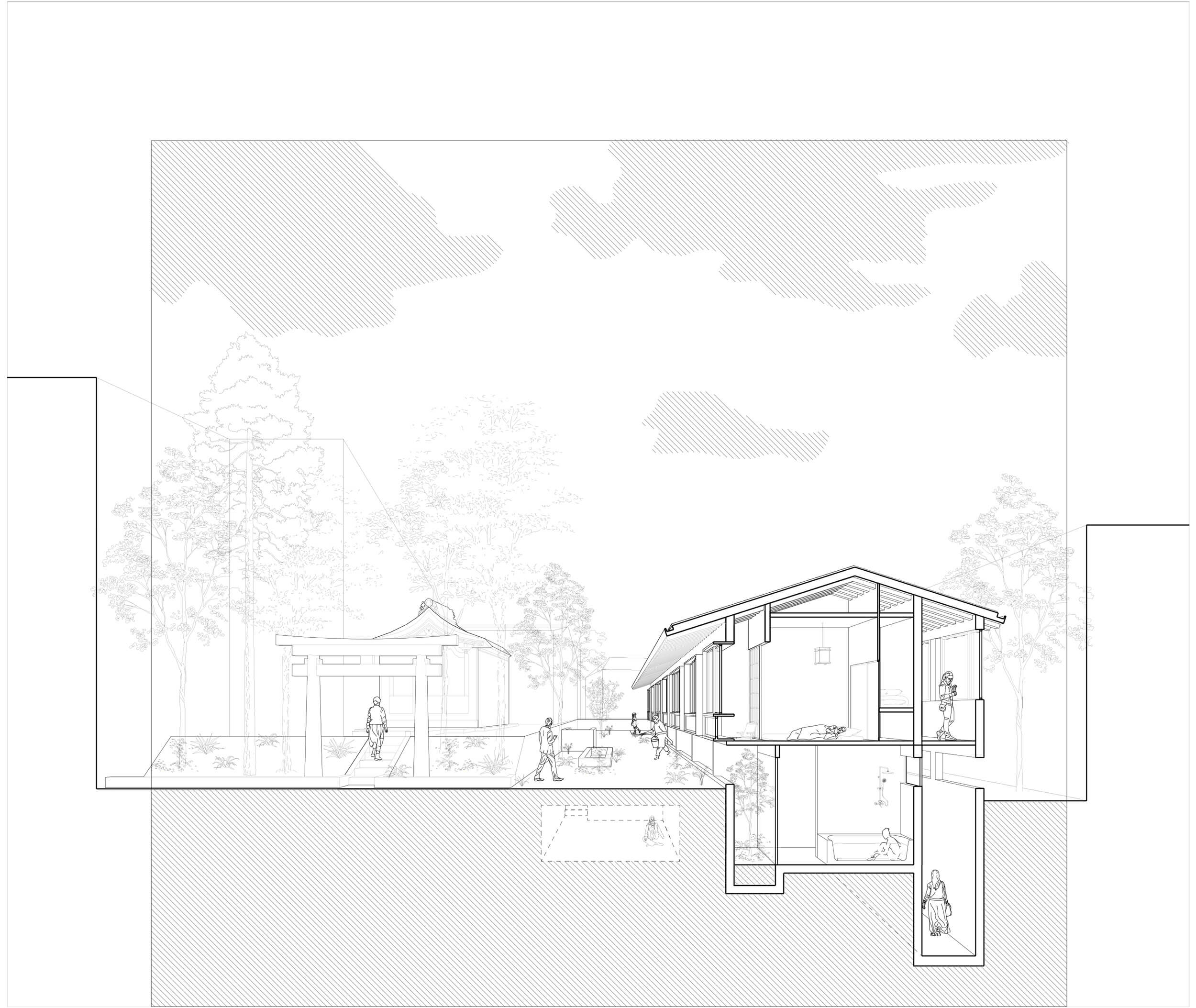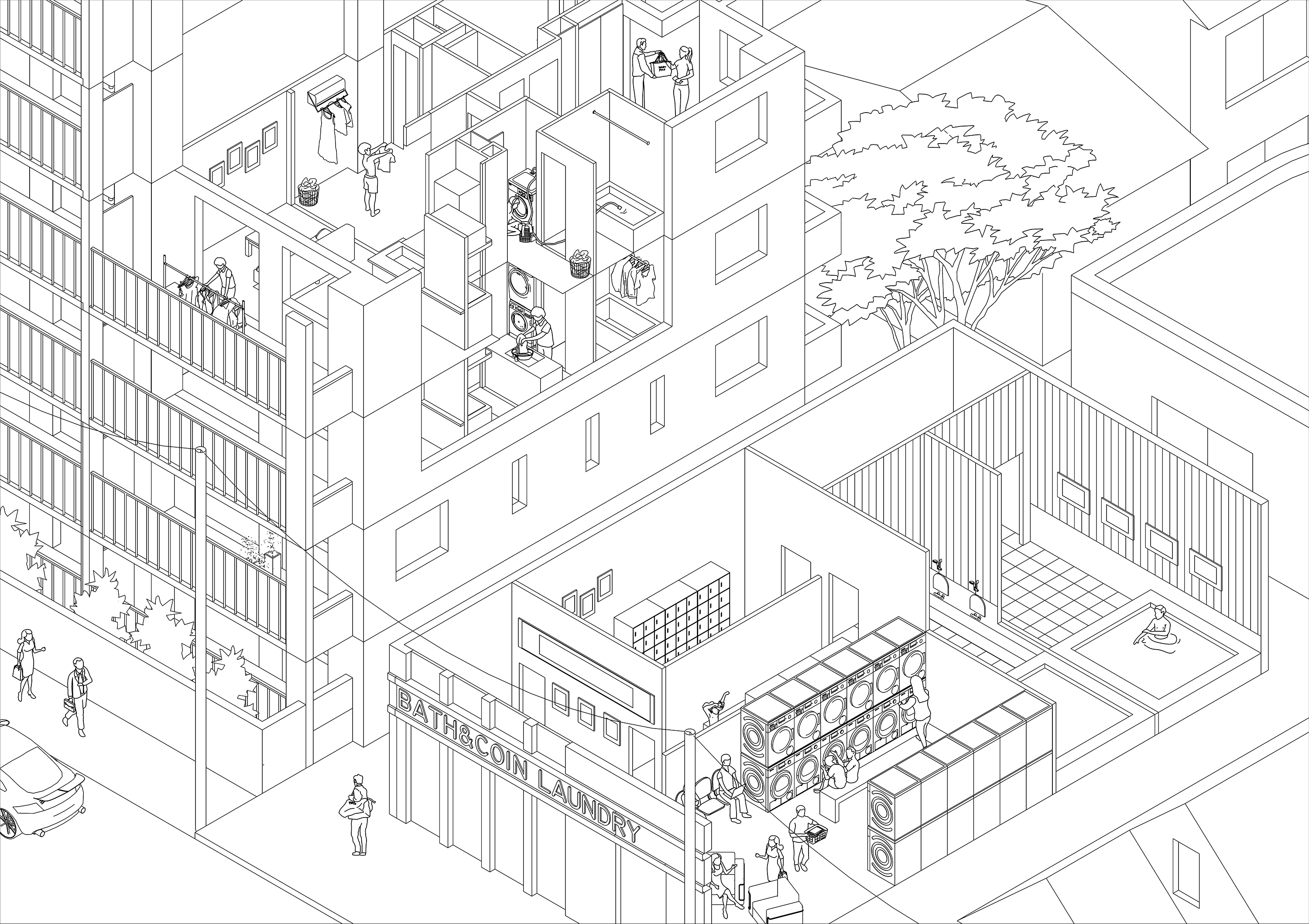PILGRIMS HOSTEL
The design proposal is on the site next to the shrine – connected on the same level, and with plenty of vegetation. We search about the activities of pilgrims, and offer a timeline of activities: the basic ones (sleeping, bath- ing), and some that connect with the spiritual experience (dining, workshops, tea ceremony, meditation/worship). The process started with dispersing the activities on the site to create the design, and connect them in two areas public and private, linked with the semi-public outdoor space.
The sequences were part of the pilgrimage narrative – spiritual journey within the site. From arriving, along the long ramp corridor, to come to the point which is opposite of the public entrance to the temple. And climbing few steps, to reach a garden semi-private, disconnected from the street with the terrace from the hostel. The garden offers three paths – meditation room under ground, with a sky opening that views the shrine. Continuing to the terrace and the reception of the hostel, or continuing to the shrine. After the reception, few steps are climbed to provide accommo- dating space on the same level as the shrine.
Student: Amalianisa Kushartanti
Laundry
The importance of laundry as a part of Japanese everyday life has steadily declined, mainly due to the reduction of the time, space, and tools required to perform this household task. This development has not only been caused by technical progress, such as the introduction of electrical washing machines and dryers, but also by demographic and societal developments, in particular the changing role of women in Japanese society. Even though the appearance of coin-operated launderettes in the post-war years, combined sometimes with public baths, introduced a new form of communality, overall the collective aspect of doing laundry chores has decreased drastically from the pre-modern period to the present. Today washing activity is split between a variety of laundry settings and forms, ranging—dependent on the residential environments that coexist in contemporary Japanese society—from minimal washing units, to the use of balconies or bathroom dehumidifiers for drying, to communal spaces.
Private Garage
Spaces sometimes surpass or deviate from the expectations of their designers. While conceived as a specific space to park one’s car, garages are often transformed into storage-spaces, workshops, or even living rooms, revealing the ambiguous status of this space as both an extension of exterior and interior activities alike. Correspondingly, the car itself can be understood either conventionally and functionally as a vehicle to drive from one place to the other or as a space of intimacy for living, resting, or even hiding. This appropriation can, as in advertisements, transform the car itself into an object of desire, to be cared for and even cherished as a piece of art to be exhibited in one’s home.

